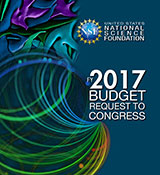- Home
- Agencies
- Department of Agriculture
- Department of Housing and Urban Development
- General Services Administration
- Department of Commerce
- Department of the Interior
- National Aeronautics and Space Administration
- Department of Defense
- Department of Justice
- National Science Foundation
- Department of Education
- Department of Labor
- Office of Personnel Management
- Department of Energy
- Department of State
- Small Business Administration
- Environmental Protection Agency
- Department of Transportation
- Social Security Administration
- Department of Health and Human Services
- Department of the Treasury
- U.S. Agency for International Development
- Department of Homeland Security
- Department of Veterans Affairs
- Goals
- Initiatives
- Programs
Primary tabs
Key to Changes
This text is Revised text
This word has been added to the text
This text is Last Published text
This word has been removed from the text
Modifed styling with no visual changes
Strategic Objective
Strengthen the links between fundamental research and societal needs through investments and partnerships
Strategic Objective
Overview
The first part of NSF’s mission, as expanded by the first strategic goal, is to create new knowledge and expand the Nation’s intellectual capital. However, NSF's mission does not end there. We also must connect new knowledge to innovations that address societal needs above and beyond the need for advancement in science. This strategic objective is aimed at developing connections between new insights and global challenges (often involving essential interdisciplinary collaborations, prototypes, and technologies). It also entails educating a workforce capable of using and adapting discoveries to meet society’s needs.
One approach to developing these connections is through partnerships involving other government agencies and private and international entities. Such partnerships leverage NSF resources and help ensure that fundamental research outcomes are translated into benefits to society.
Read Less...Progress Update
The Strategic Review of this goal and objective considered how access to large-scale, NSF-funded data repositories advances national health, prosperity, and welfare, and the critical barriers to making NSF-funded scientific data more broadly available and enduring. It also examined whether existing NSF mechanisms are sufficient to inform relevant communities about data repositories.
1. How does access to NSF-funded data repositories advance national health, prosperity, and welfare?
NSF, along with other federal agencies, has funded hundreds of data repositories. Efforts redoubled in 2013 in response to OSTP’s call to make publically-funded research more available. Three ways repositories contribute to societal needs are:
• Access to high quality data encourages innovation by lowering the technical and resource barriers to innovation and engaging a global research community.
• Expanded access to enduring, quality data expands the accepted scholarly record to include the preservation of the observational, experimental, and computational data that is rapidly accumulating in every field of science.
• Increased access to data leverages the public research investments that result in data generated by surveys, mobile and embedded systems, sensors, observing systems, scientific instruments, experiments, simulations, evaluations and analyses.
2. What are some of the critical barriers to making NSF-funded scientific data more broadly available and enduring?
One of the barriers is that infrastructure is limited. There are few existing long-term, deep archives that are readily suitable for data deposit. Tools for search and discovery, and pathways for data transfer to repositories at project end need to be improved. There is also the need for more consistent data citation standards and the use of persistent data identifiers.
Another barrier is that roles and responsibilities are still evolving and this leads to uncertainty. This is true in the research community regarding data management practices, dissemination, and attribution/re-use. At NSF, roles regarding data policies in proposal review and portfolio management are evolving. Among federal agencies, roles for coordination, planning, and assessing data efforts are also changing.
Financial resources are needed to address disciplinary/strategic data repository needs, to ensure the sustainability of major NSF-funded community data facilities, and to enable “long tail” continued use of data repositories.
3. What are the mechanisms in place within NSF to inform relevant communities about data repositories, and are they sufficient?
Several, disparate repository efforts are found across the agency in various programs. The Public Access Plan1 provides high-level guidance and clearly states NSF’s firm commitment to data access and preservation. The Cyber-infrastructure Coordinating and Leadership Group (CI-CLG) is exploring current efforts in data and cyberinfrastructure priorities of the various directorates, and relevant gaps and opportunities.
Opportunities for Action or Improvement
• Refine data management guidance and practices (see, e.g., NSF’s Public Access Plan, Sections 7.2.2-7.2.3, 7.3.2, 7.4.2);
• Identify and expand use of partnerships to support creation and sustainability of data management resources.









